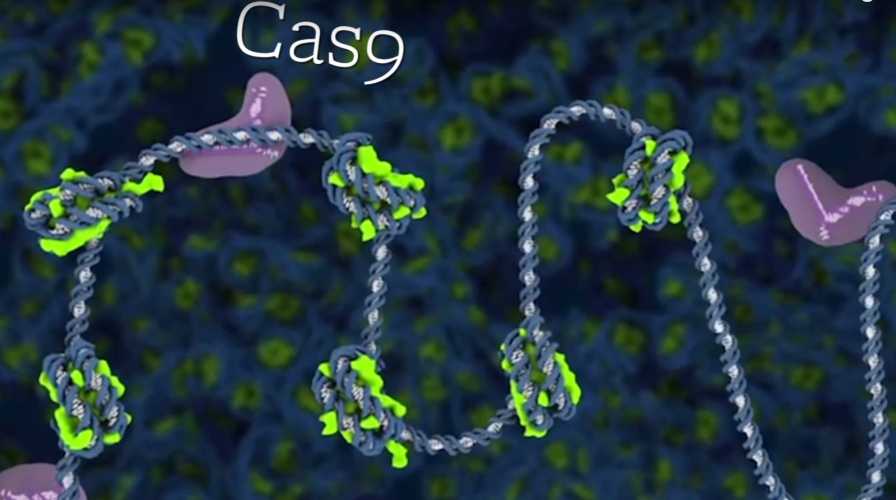5 Questions to Help Growers Get to the Bottom of CRISPR
Few “ag tech” developments over the past several years have drawn more attention than CRISPR. But what will this technology mean in the real world for growers and the breeders who serve them? To find out, we went to Vonnie Estes, the new VP of Technology for the Produce Marketing Association (PMA) who in a prior stop in her career helped to commercialize the CRISPR technology. Her role at PMA is to bring technology to the produce industry across the supply chain.
Estes, the 2017 recipient of the Rosalind Franklin award for leadership in biotechnology, has a BS in Horticulture from New Mexico State University and a masters in Plant Pathology from UC Davis. Here’s what she told us about CRISPR.
1. Let’s start with the basics: What exactly is CRISPR?
Estes: CRISPR is a gene-editing tool that is shaping the future of both human health and agriculture. In medicine, researchers are working towards cures of genetic diseases such as sickle cell anemia and Huntington’s disease. CRISPR has the potential to address important challenges like drought and changing pest populations in agriculture. We can also develop crops that are more sustainable with higher nutritional value and better flavor.

Vonnie Estes
Gene editing is a collection of technologies, including CRISPR (short for “clustered regularly interspaced short palindromic repeats”), which allows plant breeders to make precise and targeted improvements in the plant’s genetic code. Unlike genetic modification, gene editing does not involve a transfer of foreign genetic material between species. Just six years after scientists published the first papers about CRISPR, it is sweeping through the world’s academic and corporate laboratories. Some applications, such as more flavorful tomatoes and mushrooms that don’t turn brown, have been fully developed in labs.
2. Why would a grower want to use CRISPR?
Estes: CRISPR is a low-cost and fast new tool for plant breeders. Breeders can develop traits like disease resistance and non-browning along with color, flavor, and nutrition enhancements.
Improved varieties can be developed and commercialized much faster (in the U.S.) for two reasons. First, if the genomic sequence for a desired trait is known, a breeder can develop a variety with that trait much faster with CRISPR than any other breeding technique including traditional breeding, mutagenesis, and genetic modification. Second, as compared to genetic modification, a breeder does not have to spend years going through the regulatory process. The USDA ruled not to regulate plants that could have been developed through traditional breeding techniques.
3. How would a grower get access to CRISPR?
Estes: A grower would buy seeds or stock from a germplasm provider that has developed a product with CRISPR. The breeder will have obtained a license and gone through the regulatory process. Today, the EU considers gene-edited crops as genetically modified, so food products must enter commerce under those rules. Different countries have different rules, so if a grower intends to sell germplasm or a food product outside of the U.S., rules of other countries apply. As of February 2019, no germplasm, seeds, crops, or food using CRISPR Cas9 were commercially available in the U.S. supply chain. The Arctic apple was engineered to be non-browning, but did not use CRISPR technology.
Many germplasm companies are conducting “shadow programs” – breeding programs held completely separate from their commercial breeding programs – so that when or if regulations change, they are not behind.
A germplasm owner wanting to use CRISPR in the development of new products must follow several steps. First, to deploy CRISPR for commercial use, a license must be obtained. I suggest contacting someone who is aware of the patent issues before going down this path. There are competing patents and competing license providers. Corteva Agriscience currently owns the rights to license and sublicense most of the CRISPR Cas9 intellectual property. Germplasm companies should contract a good attorney to negotiate the license. Other gene-editing companies like Benson Hill Biosystems and Inscripta are developing CRISPR systems that are said to be outside the CRISPR Cas9 (i.e., Broad Institute and UC Berkeley) patent rights. These companies are easier to work with; however, there are fewer scientists who have experience putting alternative CRISPR systems into practice.

Cas9 seeks out certain sections of DNA chains to “clip out” undesirable traits, and in some cases, add in new desirable attributes.
Illustration courtesy of UC Berkeley
After obtaining a license and agreeing to the fees and royalties, the technology must be reduced to practice. This requires molecular breeders along with transformation and greenhouse facilities. The gene edit itself is relatively simple, but the following biology is hard! These capabilities and facilities are expensive to build and staff internally. Many universities will do this work. The competency, price, and royalty fees vary greatly and should be closely investigated.
4. What are the risks?
Estes: Consumer acceptance is a barrier with gene editing. According to a survey from the Pew Research Center last November, about half of U.S. adults still believe GM foods are worse for human health than their non-GM equivalent. Whether consumers will be able to distinguish between gene editing and GMOs is unclear. There could be consumer backlash against brands that deploy gene editing.
USDA will regulate gene editing the same as traditional breeding techniques if outcomes are indistinguishable. The European Court of Justice ruled in July that gene-edited crops will be subject to the same rules as GMOs. Any company that produces germplasm, food products, or food to a global market is hampered by this ruling.
5. So what’s the future outlook for CRISPR?
Estes: Gene editing can meet the challenge of production, along with making food more flavorful and nutritious. The path to widespread usage is currently complicated – from the science to consumer acceptance. But with the tremendous enthusiasm of the research community, gene-editing technologies will improve rapidly along with the techniques and technologies needed to support crop use.
Companies interested in using CRISPR or other gene-editing technologies need to carefully navigate the opportunity – balancing obtainment of the correct license, protection of brand equity, and attention to global trade barriers to make sure they get a return on investment in a reasonable time frame.










